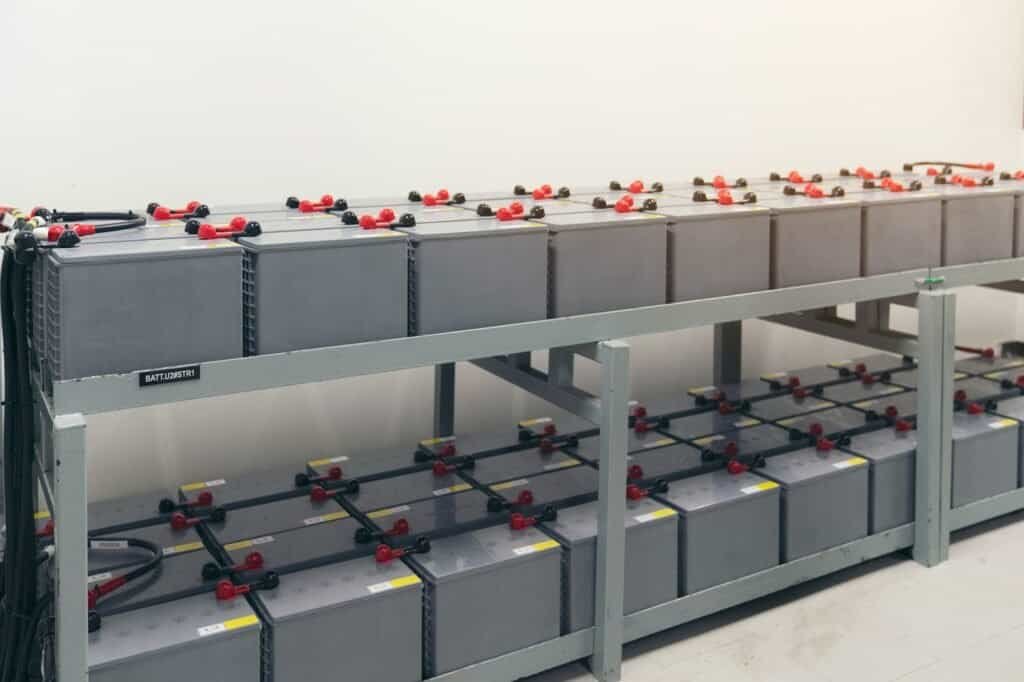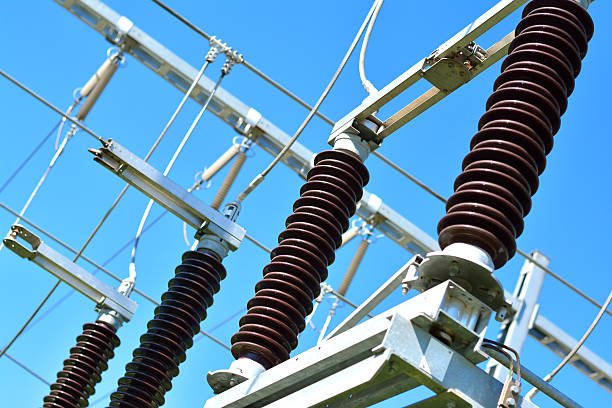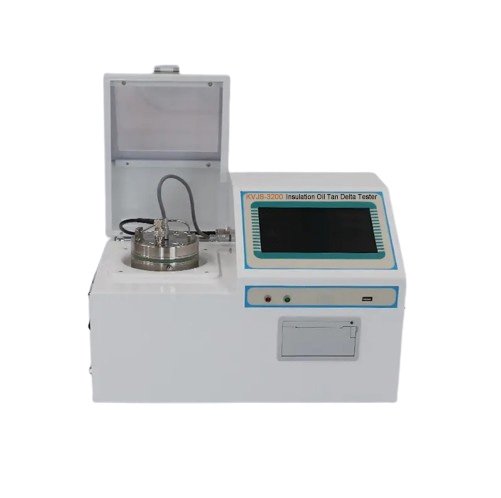Batteries are the lifeblood of modern electronics and power systems, providing the essential energy storage and delivery required to power a wide range of devices and infrastructure. Reliable and well-maintained batteries are critical for ensuring the continuous and uninterrupted operation of essential systems, from consumer electronics to mission-critical backup power supplies.
This article introduces battery discharge testing information and the guide of battery discharge capacity test ensure to help you successfully proceed discharge testing to identify the battery state of health (SOH).

What is battery discharge testing ?
Battery discharge testing, also known as battery load testing, is a process that test battery health statement by constant current discharging of the set value by continuously the discharge current from a fully charged state and then measuring how long the battery lasts.
This method helps to determine the battery capacity under different loads which in turn helps understand the lifespan and reliability of the battery. The process also helps in identifying if a battery has any inherent faults or weaknesses.
The process generally includes the application of a specific load for a known period of time, and then monitoring the battery’s response. The results can then be used to make decisions about whether a battery should continue to be used, replaced, or undergo further testing. It’s an important process especially in systems where reliable backup battery power is important.
What is battery capacity ?
Battery capacity is the measure of how much electrical energy a battery can store which is the important index to judge the performance of battery. The capacity of a battery be able to provide a certain current (A) for a certain duration (hr). It is usually measured in ampere-hours (Ah) or milliampere-hours (mAh). The capacity is determined by the size of the cells and the number of cells in the battery pack. A battery with a higher capacity can store more electrical energy and can therefore power a device for a longer period of time before it needs to be recharged.
What is battery capacity test ?
A capacity test is a procedure used to measure the capacity of a battery. There are several methods: constant current discharge, constant power discharge, constant resistance discharge that can be used to perform a capacity test, but the most common method involves discharging the battery at a constant current until the voltage drops to a predetermined level. The amount of energy that was discharged during the test is then used to calculate the battery’s capacity. Capacity tests can be used to determine the health of a battery, to ensure that it is able to hold a charge, and to compare the performance of different batteries.

What is discharge rate ?
Discharge rate refers to the rate at which a battery is depleted of its stored electrical energy. It is usually measured in terms of amps or milliamps per hour (Ah or mAh), and it represents the current drawn from the battery over a certain period of time.
The discharge rate of a battery can be affected by a number of factors, including the load being placed on the battery, the age of the battery, and the temperature at which it is being used.
A battery with a high discharge rate is able to deliver a large amount of electrical current in a short period of time. This can be useful for applications that require a lot of power, such as starting an engine or running high-power devices. On the other hand, a battery with a low discharge rate may be more suitable for applications that require a steady, sustained supply of power, such as powering a device that is used over a long period of time.

In electricity, the discharge rate is usually expressed in the following 2 ways.
(1) Time rate: It is the discharge rate expressed in terms of discharge time, i.e. the time experienced by a certain current discharge to the specified termination voltage. Such as C/5, C/10, C/20
(2) C rate: the ratio of the battery discharge current relative to the rated capacity, that is, times the rate. Such as 0.1C, 0.2C, 0.5C
The below table shows the different battery C Rates along with the discharge time .
| C Rate | Time |
|---|---|
| 20C | 3 mins |
| 10C | 6 mins |
| 5C | 12 mins |
| 2C | 30 mins |
| 1C or C1 | 1 hour |
| 0.5C or C/2 | 2 hours |
| 0.2C or C/5 | 5 hours |
| 0.1C or C/10 | 10 hours |
| 0.05C or C/20 | 20 hours |
How is discharge rate calculated ?
The formula for calculating the discharge rate of a battery is:
1. Calculating Load Current with C-Rate
The load current (I) can be calculated using the C-rate (C) and the rated capacity of the battery (Q):
C-Rate (C) = Charge or Discharge Current (I) / Rated Capacity of Battery (Q)
Rearranging this formula to solve for the discharge current:
I = C × Q
2. Calculating Expected Available Time of the Battery
The expected available time (T) of the battery can be calculated using the discharge capacity (Ah) and the discharge current (I):
Used hour of the battery (T) = Discharge capacity (Ah) / Discharge current (I)
Examples
Example 1: Lead Acid Battery
Rated Capacity (Q): 40Ah
C-Rate (C): C/10
Discharge Current (I):
I = (1/10) × 40 = 4A
Expected Available Time (T):
T = 40 Ah / 4 A = 10 hours
Example 2: Nickel-based Battery (NiCd/NiMH)
Rated Capacity (Q): 2.5Ah
C-Rate (C): 1C
Discharge Current (I):
I = 1 × 2.5 = 2.5A
Expected Available Time (T):
T = 2.5 Ah / 2.5 A = 1 hour
Example 3: Lithium-ion Battery
Rated Capacity (Q): 3Ah
C-Rate (C): C/2
Discharge Current (I):
I = (1/2) × 3 = 1.5A
Expected Available Time (T):
T = 3 Ah / 1.5 A = 2 hours
Here’s a table that shows the relationship between battery capacity, C-rate, discharge time, and discharge current for lead-acid, nickel, and lithium batteries. You can view the different of lead acid battery discharge rate and Nickel battery discharge rate, Lithium battery discharge rate.
| Battery Type | Rated Battery Capacity (Ah) | Discharge Rate( C- rate) | Discharge Time (hours) | Discharge Current (A) |
|---|---|---|---|---|
| Lead Acid | 40 | C/10 | 10 | 4 |
| Nickel-based (NiCd/NiMH) | 2.5 | 1C | 1 | 2.5 |
| Lithium-ion | 3 | C/2 | 2 | 1.5 |
It is important to note that the discharge rate of a battery can vary depending on a number of factors, including the age of the battery, the temperature at which it is being used, and the type of device it is being used in. In general, a battery with a high discharge rate will be able to deliver a large amount of power in a short period of time, while a battery with a low discharge rate may be more suitable for applications that require a steady, sustained supply of power.
What is the importance of battery discharge testing ?
Battery discharge testing should be carried out periodically to ensure that batteries will work when needed, like in the case of power outages. It is also important to use the result of these tests to schedule battery replacement, preventing potential system failures due to battery issues.
Verifying Battery Performance.
Discharge testing helps to confirm that the battery can deliver its rated capacity. A battery might indicate a full charge, but without a discharge test, you can’t be certain that it can deliver the power you expect.
Identifying Weak or Defective Cells.
A discharge test can highlight underperforming cells within a battery. This helps diagnose batteries that have drastically reduced performance or lifespan.
Preventing Unexpected Failures
Regular discharge testing can help spot batteries that are near the end of their useful life, so they can be replaced before they fail unexpectedly.
Ensuring Compliance with Industry Standards
Many industries have regulations that require regular discharge testing of batteries that are part of critical systems (like emergency power in hospitals, or backup power in data centers).
Prolonging Battery Life
Regularly discharging and then fully charging batteries (as part of a maintenance routine) can help keep them healthy and prolong their lifespan.
Which equipments is used for discharging testing of batteries ?
Intelligent battery discharger is a instrument that can maintain and capacity test to battery, DC power and UPS backup battery. Using the latest modern power Electronic technology and intelligent micro processing technology, cooperate with the computer data processing software, Intelligent control battery discharge process, real-time monitor the battery pack.
Easy to operation, after setting the parameters, it can test battery capacity automatically. It effectively reduces the maintenance work strength of the staff, improve the efficiency of maintenance test, reduce enterprise cost.

Battery discharge tester application
Battery discharge testers have multiple applications. They are pivotal in a broad range of sectors and are employed to ensure optimal battery performance and facilitate preventative maintenance.
Renewable Energy Systems
In solar or wind energy systems, testers help ascertain whether storage batteries can provide reliable and steady backup power.
Automotive Industries
Used in testing the batteries of vehicles to detect potential failures that might lead to breakdowns.
Data Centers
To ensure uninterruptible power supplies (UPS), discharge testers assess if the batteries can maintain the servers during power outage.
Telecommunication Systems
Since communication infrastructure is crucial during power outages, discharge tests are conducted to validate battery performance.
Alarm and Security Systems
Discharge tests verify if the backup batteries can seamlessly transition during power disruptions to ensure the continuity of the system.
Railway and Aviation Industry
The testers are used to maintain the integrity of batteries in trains and airplanes.
Manufacturing Plant and Hospitals
Used to assess the batteries of emergency power systems.

In each of these applications, the discharge tester is used to simulate a condition where the battery is required to give out its stored energy at a regulated rate until it’s discharged. This helps in verifying the battery’s state of health and its ability to perform when needed.
How to proceed the discharge test ?
- Gather the necessary equipment: You will need a battery or group of batteries, a discharge load, and a way to measure the voltage and current of the battery or battery group.
- Connect the battery to the discharge tester. Make sure that the battery is securely connected to the tester and that all connections are tightened.
- Initiate the test. Press the “start” button on the tester to begin the capacity test. The tester will discharge the battery at the specified rate until the test is complete.
- Monitor the test. Some discharge testers may have a display that shows the current state of the battery, including the voltage, current, and capacity. Make sure to pay attention to these readings during the test.
- Stop the test. When the test is complete, the tester will automatically stop discharging the battery. If the tester does not have an automatic stop feature, you will need to manually stop the test by pressing the “stop” button on the tester.
- Record the results. Make a note of the final capacity reading on the tester and any other relevant data. This information can be used to compare the performance of different batteries and to determine the suitability of a battery for a particular application.
- Disconnect the battery. Once the test is complete, make sure to disconnect the battery from the tester. If the tester has a built-in charger, you may need to remove the tester .






